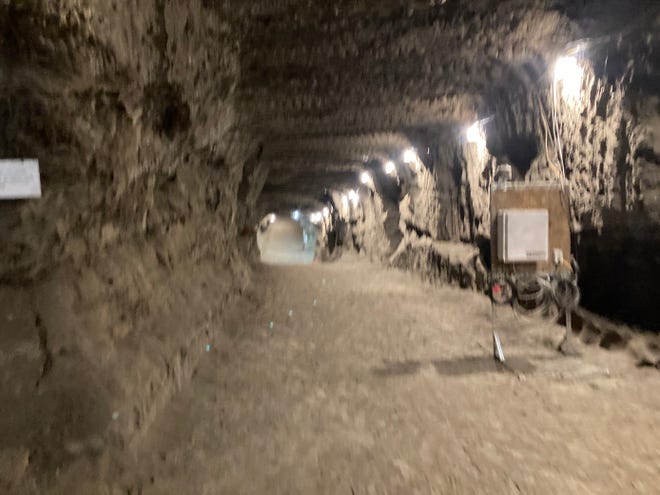WASHINGTON — A deadly pathogen dormant in the centuries-old Arctic permafrost could become the latest threat from global climate change.
The potential release of pathogens has drawn the attention of federal scientists, medical experts and Department of Defense officials. The pathogen, the microorganism that causes the disease, has been trapped for centuries in frozen soil across the Arctic, including large areas of Alaska, Canada, and Russia. Climate change is having a major impact on the Far North, where temperatures are rising two to four times faster than in the rest of the world.
The stakes are high.
Global warming has led to the opening of sea lanes in the Arctic, intensifying competition with America’s adversaries such as China and Russia. In response, the Pentagon is sending more troops and fighter jets to Alaska. The military is also conducting its largest military exercise in Alaska, involving thousands of airmen, soldiers and sailors. Keeping them healthy is the responsibility of the Department of Defense and a national security obligation.
Could higher temperatures release large numbers of microorganisms?
Rising temperatures around the world may release large numbers of microorganisms with unknown effects on humans, plants, and animals.
“We know that permafrost harbors bacterial, fungal, and viral pathogens,” says Jill Brandenberger, director of climate security research at the Pacific Northwest National Laboratory. “We know that when thawed, these animals can release all three types of pathogens. What we don’t know is how likely they are to remain alive and infectious. .”
U.S. Northern Command, the Pentagon command that protects the United States from attack, acknowledged the potential threat in a statement to USA TODAY.
“We are jointly assessing the risks related to the potential release of pathogens as a result of melting ice and permafrost due to climate change,” it said in a statement. “The nation’s best scientists, medical experts, and field workers are working together to advance the scientific understanding of what substances are released by microorganisms that melt permafrost, and to understand how this dynamic poses dangers. We are trying to deepen the public’s understanding of the potential for
Worried that released pathogens could make troops sick
Concerns that pathogens released from the ice could sicken troops drew researchers from across the government to a recent conference at the Brandenberger Laboratory, run by a contractor with the Department of Energy’s Office of Science.
Permafrost covers 85% of Alaska and is made up of soil and rock that remains frozen year-round. It can reach depths of 300 feet in the northernmost parts of the state, and thinner further south. Just outside Fairbanks, the Army Corps of Engineers operates research tunnels dug into permafrost. Inside the dusty cave, microbial activity is evident even at sub-zero temperatures. The cheap smell of methane is a sign that microorganisms are breaking down organic materials.
Brandenberger has been advising the military on the effects of climate change for a decade and said the Pentagon is keenly interested in how pathogens could affect troops operating in the Arctic. Stated. Although global warming is warming local temperatures, winters remain harsh, with temperatures below -50 degrees Fahrenheit still common in Fort Wainwright, Fairbanks. Soldiers coming from southern states could be particularly vulnerable.
“That could increase the ability of indigenous people who lived there to develop symptoms from exposure to the pathogen, for example, where they wouldn’t develop the same symptoms because they lived there,” she said. .
Research gap?
A key issue for officials is what Brandenberger calls the “research gap.” Our current understanding of what harmful microorganisms exist, which microorganisms are likely to survive freeze-thaw cycles, and how they infect plants and humans is limited. I am. Most pathogens cannot survive, but some may adapt, she said.
“One of our big concerns is that there are so many unknowns,” Brandenberger said.
Permafrost remains stable for up to 1,000 years. What it could unlock was a key topic for permafrost experts, microbiologists, virologists, data scientists, oceanographers and clinicians who attended the conference in Seattle. Scholars from the University of Idaho, Carnegie Mellon University, and the Center for Resilient Communities at the University of Alaska Fairbanks also attended.
A further complication is that permafrost is not uniform. A thin patch around Fairbanks. Wainwright is warm and the snow melts quickly. Heavy summer rains accelerated melting in the area. Identifying areas of permafrost that are likely to harbor pathogens could provide the military with a “risk map.”
“If possible, I’d rather not go here,” she said of the possibilities the risk map shows. “If you go here, please take all precautions, including bringing water with you.”
thawed animal carcass
Danger is not hypothetical. Blunderberger noted evidence that the deadly anthrax bacteria was released from thawed animal carcasses. But she called these cases “one-off, low-probability” events. The Arctic permafrost also contains burial grounds for victims of smallpox and influenza.
It’s unlikely the next coronavirus is waiting to be released from the tundra, she said. Her main worry isn’t the zombie bug causing the apocalypse.
At this point, there should be an urgent need to learn more about what’s out there, since it’s likely that the pathogens there will eventually infect humans, animals, or plants.
“It’s definitely a possibility and we should do the research,” Brandenberger said. “Is that something we need to panic about at this point? We really need to focus on the more technical gaps in the science.”

